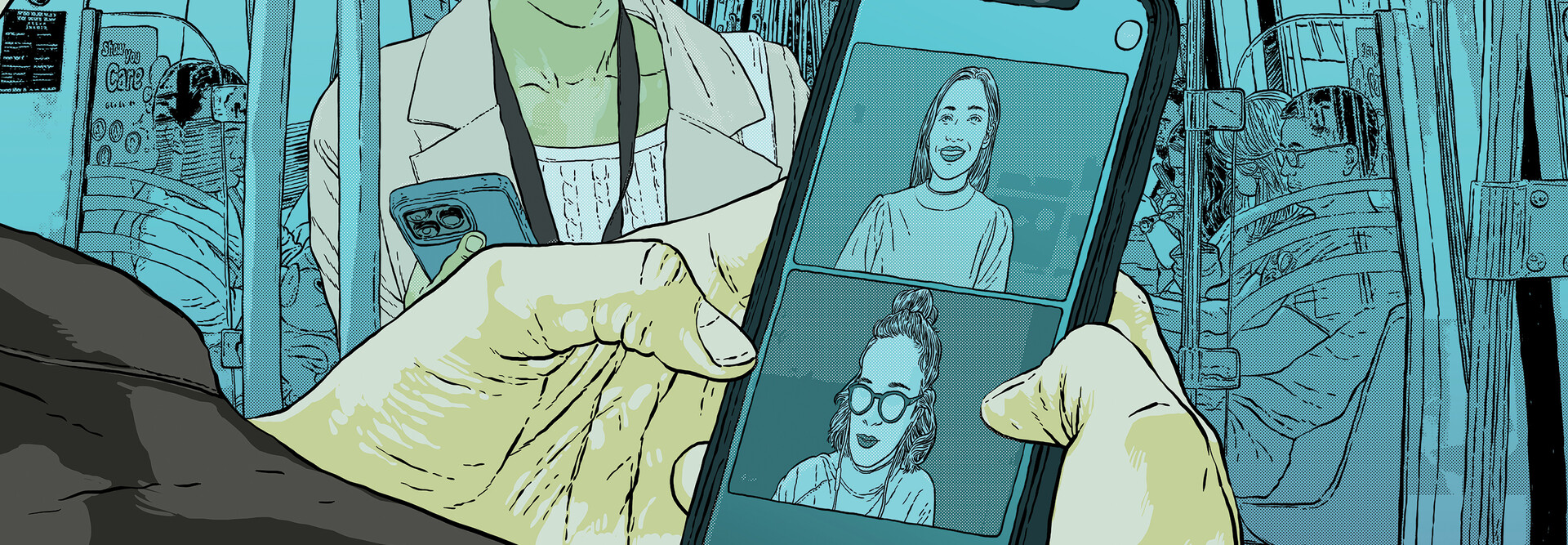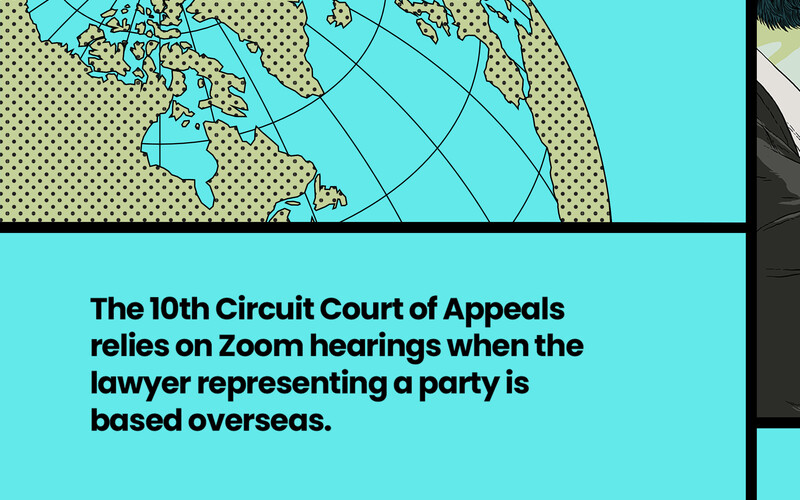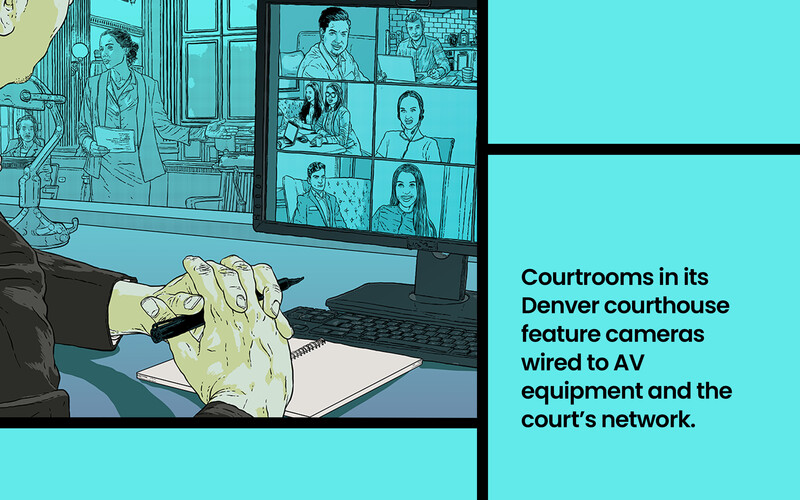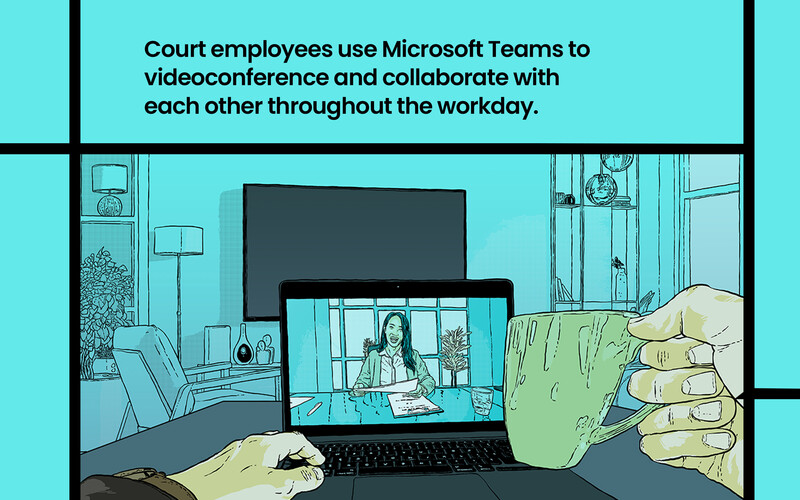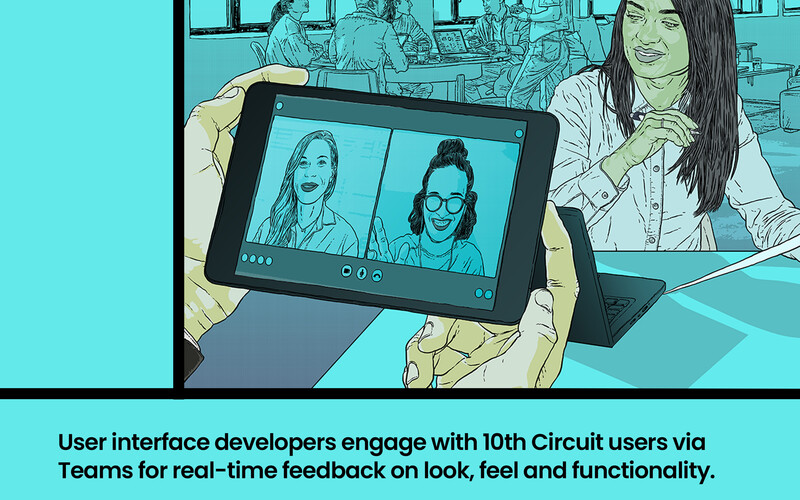In 2024, he submitted a request to the committee that oversees amendments to the Federal Rules of Criminal Procedure to continue allowing certain types of hearings to be conducted via video if specific conditions were met. Although the committee rejected his request, he’s hopeful the rule will eventually change.
“It would make things more efficient,” Ludwig says. “I could put more hearings in a day if we didn’t have to deal with all of the logistics of getting people in and out.”
The Eastern District of Wisconsin court has some leniency to use Zoom for civil case testimonies; if a plaintiff, for example, is incarcerated, and transporting the person to the courthouse would involve numerous costs and complications because they're serving a sentence, Ludwig says.
He and his staff also touch base via Microsoft Teams’ instant messaging and videoconferencing features, sometimes multiple times a day.
“We use it during court hearings,” Ludwig says. “If I’m on the bench and something comes up, I can send a Teams message to one of my law clerks, and they can respond instantly. I don’t have to take a break and go back and talk to them, so that’s helpful.”
RELATED: Agencies can get more out of Microsoft Teams.
Prepping Participants To Maximize Tech Performance
The U.S. Court of Appeals for the Ninth Circuit began livestreaming cases via YouTube more than a decade ago. Though the court had also used videoconferencing for oral arguments, it had been hesitant to let participants regularly join proceedings through video due in part to connectivity concerns, says Assistant Information Systems Manager Kwame Copeland.
“Todays, because you’re using an app-based video teleconference system, you’re relying on the fact that networks are cheaper and bandwidth is plentiful,” Copeland says. “When we suddenly needed to do videoconferencing for everybody during the pandemic, the answer was to switch to Zoom. We could do that just with licenses.”
To ensure remote proceedings went smoothly, the Ninth Circuit — which covers nine western states — distributed webcams to federal judges and developed equipment usage guidelines for judges and attorneys that outlined how the audio and other elements were expected to work.
The videoconferencing platform proved to be fairly intuitive, Copeland says.
“If somebody had a terrible connection, it was probably the fault of their home or business network,” he says. “You could say, ‘Can you get closer to your endpoint? Can you go into a different room?’ Because we insisted you were testing from wherever you were going to be presenting, we could solve those problems.”
UP NEXT: Agencies are augmenting endpoint management with machine learning.
Some of the platform’s features have helped support seamless participation; the court has used a breakout room, for instance, as a virtual robing room where judges can greet each other, as they would onsite, and discuss cases in private.
“Sometimes, we’ve got one judge by video who is directed between the virtual robing room, which is connected to the actual robing room, and then moved back into the main courtroom,” Copeland says. “We use that as a delineation.”
Both sides of a videoconference call connection are encrypted. To further secure communication, Copeland advises, each meeting should have a host who can review and permit participants to join.
“We’ve had had instances where folks might have inadvertently called into a meeting they didn’t realize they weren’t invited to,” he says. “Ninety-nine percent of the time, they’ve been in the waiting room and not the meeting. That’s why you have a host.”



